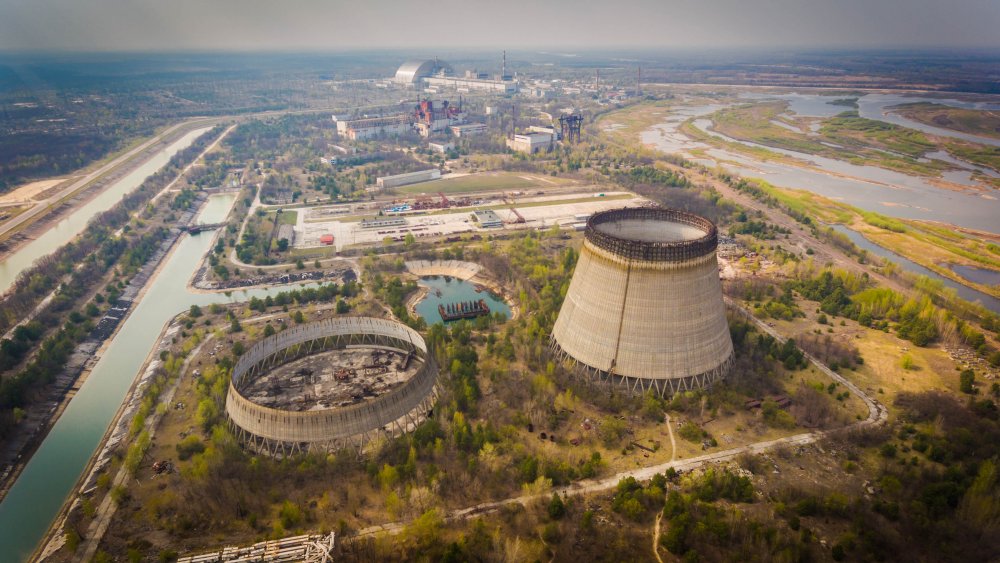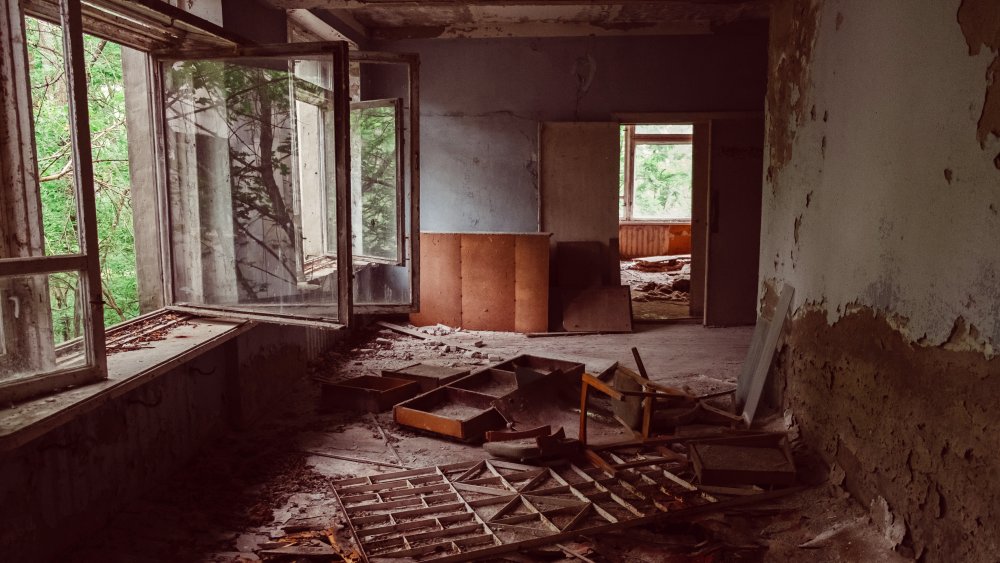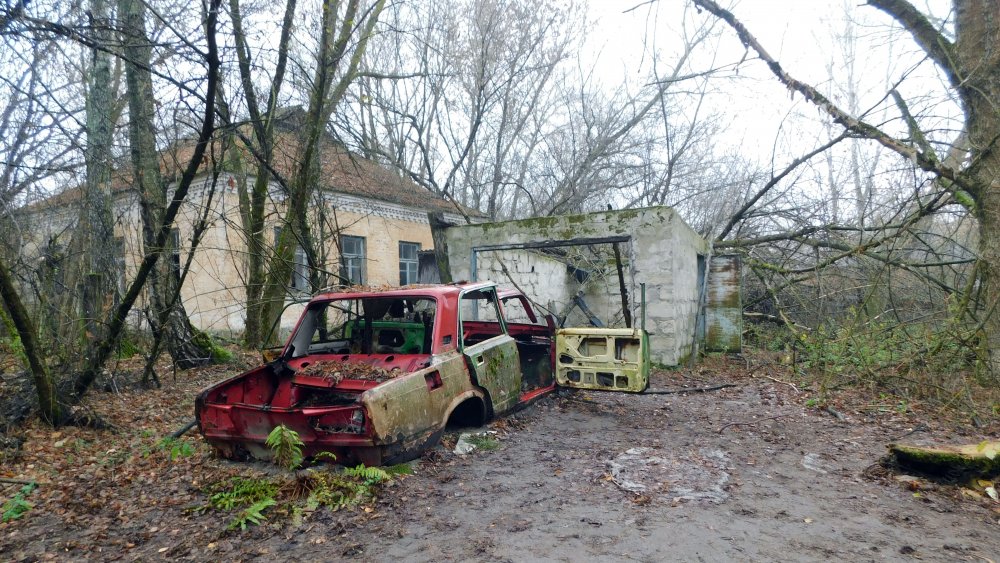The Truth About The People Who Moved Back To Chernobyl
Anybody who watched the HBO miniseries Chernobyl knows exactly how catastrophic the 1986 meltdown of a certain Soviet nuclear power plant really was. The Chernobyl incident was the worst nuclear disaster in human history, and as a result, the area around the reactor — known as the exclusion zone — was evacuated. To this day, it remains illegal to live there.
However, that didn't stop some resilient inhabitants from remaining, and recently, the area has even seen new residents arrive. Of the 200 or so people who stayed or moved back shortly after the evacuations, most are elderly, and they generally stayed on because they felt they couldn't leave their ancestral lands. According to the Irish Times, they are referred to as Samosely, or illegal settlers, and they live off of foraged food and government assistance. Although their existence in the exclusionary zone is unauthorized, little effort has been made to force them to resettle elsewhere.
New arrivals in Chernobyl
These elderly stalwarts aren't the only people currently living on the outskirts of the Chernobyl exclusion zone. In recent years, there has been a small migration to villages both on the Ukranian and Belarusian sides of the zone. According to Newsweek, the government of Belarus, which is ruled by Alexander Lukashenko (sometimes called the last dictator in Europe), provides free amenities and healthcare to people who settle in the exclusion zone, which has drawn some poor folks to the area.
On the Ukranian side, conflicts have seen displaced people drawn to the cheap living in villages around Chernobyl. The BBC profiled a woman named Maryna who fled military bombardments and settled just outside of the exclusion zone. A migrant with little money, Maryna was able to secure housing for herself and her family by caring for an elderly resident in the final stages of dementia. When he died, his house was passed down to Maryna's family, where they have continued to live since.
The Chernobyl exclusion zone remains dangerous
Although the areas surrounding Chernobyl are less toxic than they were in the immediate aftermath of the fallout, that doesn't mean the area in or around the exclusion zone is entirely safe for habitation. Keep in mind, Chernobyl is a place that actually harbors a radiation-eating fungus, and according to Business Insider, the biggest threat posed to residents is ground contamination. Radiation that seeped into the soil still has the potential to affect any food grown in the area. Furthermore, milk from cows, who feed off grass grown in the radioactive soil, has also been shown to possess unsafe levels of radiation.
Despite the dangers, those who call the exclusion zone home often feel that they have no choice. As Maryna told the BBC, regarding her decision to move from her war-torn region to the area around Chernobyl, "I don't care about the radiation. I only care that there are no shells flying over my children. It's quiet here. We sleep well and we don't need to hide."


